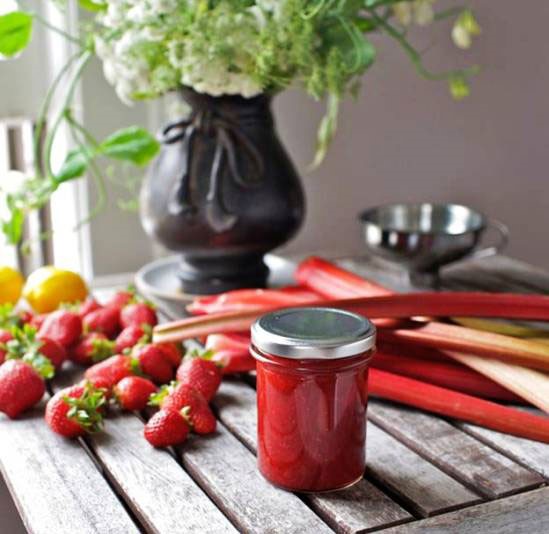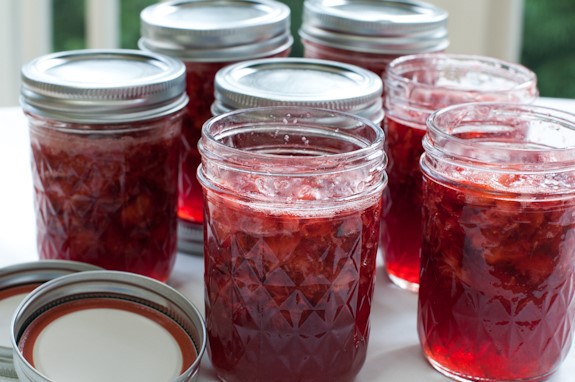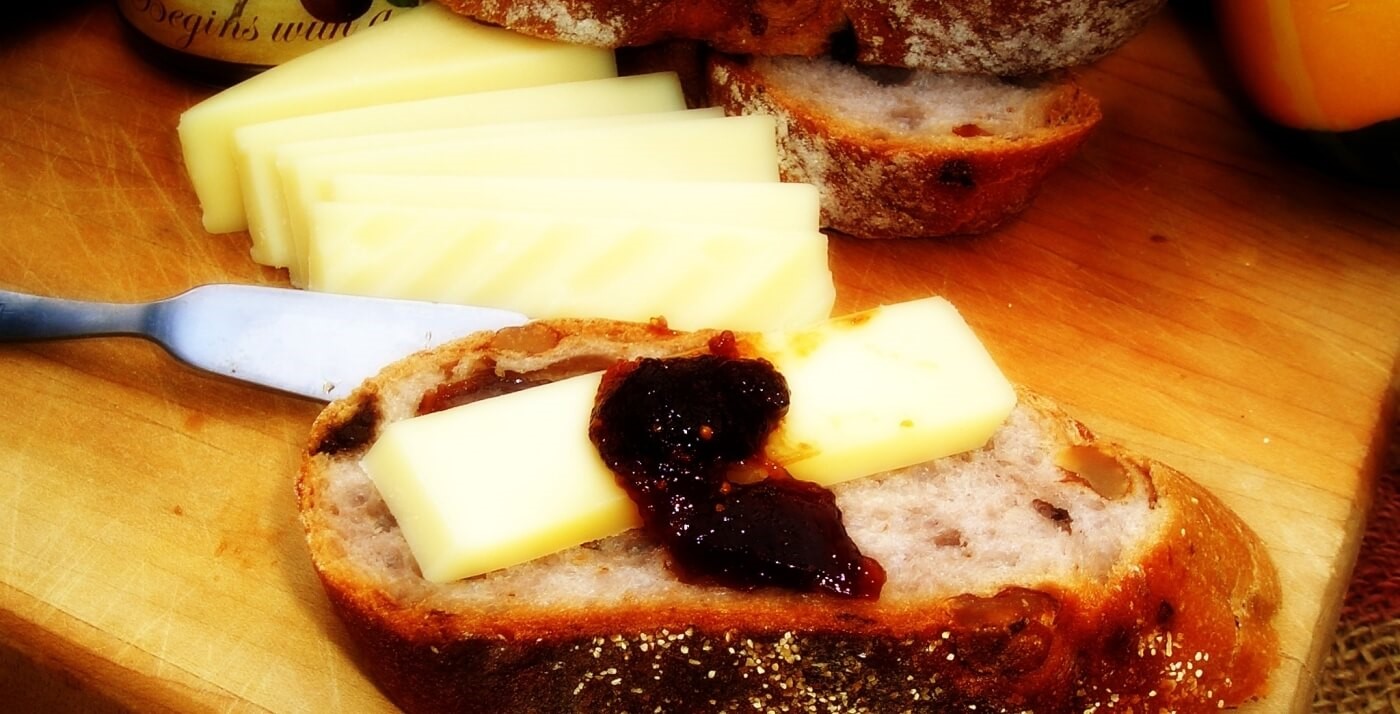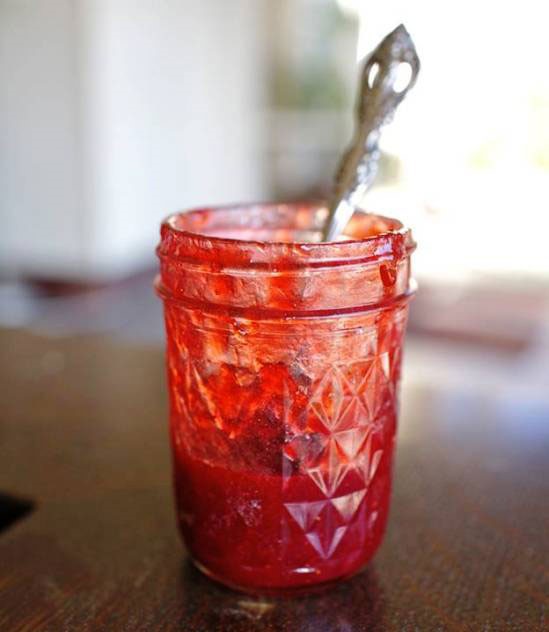UNIVERSAL Jam and Jam-Making Basics
Kevin West (creative director of Grand Central Market, Los Angeles, and a food writer and amateur chef), shares some awfully good information on jam-making in the Feb. 9 issue of Mother Earth News. Since strawberries will be coming on in the next couple months, I thought it might be helpful to look at what he says (my husband’s been begging for homemade strawberry jam).

He says it’s a UNIVERSAL jam recipe because it works with any fruit (other than citrus, which is a somewhat different beast). This same basic recipe will also carry you through the rest of the canning year with only minor adjustments. The results are modestly sweet and balanced with freshly squeezed lemon juice.
Kevin has a couple jam-making rules that you might already know, but a reminder never hurt:
· Whatever the season, use the best fruit you can find. “Good fruit makes good jam.”
· Work in small batches. Three pounds of fruit will yield something like 2 ½ pints of jam, give or take. If you want more jars, make two small batches rather than one double batch. He promises the results will be nearly as fast, and the quality will be superior.

Also, for now don’t worry about canning your jam—that is, you don’t need to process the sealed jars in a boiling water bath. Just store the jam in the refrigerator, where it will last for weeks. You can rest assured that homemade jam won’t kill your friends and family.
And the reason he can promise this? In briefest terms, jam made from almost all familiar fruit is classed among the “high-acid foods,” which are not susceptible to the risk of botulism. Acidity is a silver bullet against botulism. The only way to hurt someone with a jar of jam is to hit him in the head with it.

Fruit jam obviously has a natural home on toast, bagels, pancakes, waffles, pound cake, trifle, puddings, and ice cream. But also consider using jam on the savory plate—similar to how we use cranberry jelly with turkey. A dab of peach or apricot jam is delicious with pork, for instance, while cherry jam and plum jam goes well with cheese.
Following is Kevin’s recipe for his UNIVERSAL Jam. Just so you know, this works quite well with leftover canned and frozen fruit. You know how it is—it’s almost time for a new season of crops and dang it! You still have stuff in your pantry or freezer from last year. My last-year’s frozen peaches worked great with this recipe!
So I highly recommend this recipe and am so excited I’ve found it. Give it a try and let me know what you think:

UNIVERSAL JAM
Yields about 2-1/2 pints
3 lbs prime, just-ripe fruit (strawberries, blackberries, raspberries, cherries, peaches, plums, etc.)
2-1/2 cups sugar (or adjust as explained below)
1 lemon
1. Clean and cut the fruit as you would for making fruit salad or fruit pie. For example: remove the caps from strawberries, and cut into quarters; or peel and pit peaches, and slice into pieces; or trim rhubarb and chop it into chunks.
2. Using a potato masher or your own clean hand, crush the fruit until soupy. Measure this puree, and note the quantity. You’ll probably have about 5 cups, but expect some variation depending on the fruit. Put the puree in a wide, heavy-bottomed, non-reactive pot. The puree should be no more than 1 inch deep in the bottom of the pot.
3. For every two cups of fruit puree, add to the pot one scant cup of sugar and 1 tablespoon freshly squeezed lemon juice. Stir to combine, and taste. Very tart fruit (such as sour cherries or some plums) might need a little more sugar. Very sweet fruit (such as white peaches) might need a little more lemon juice. Adjust to taste.
4. Bring the fruit-sugar mixture to a boil over high heat, stirring frequently. After it boils, continue to cook over medium-high heat, stirring constantly, for 12 to 14 minutes, or until thickened. Check the consistency by turning off the heat and putting a spoonful of hot jam on a chilled saucer in the freezer for one minute. When ready, the cold jam will form a light skin that wrinkles when you push your finger through it, and it will cling to the saucer when you tilt the saucer upright. If the cold jam is too runny, bring the pot back to a boil for another minute or two, stirring constantly, then check the set again.
5. When the jam is thickened to your liking, ladle it into clean half-pint jars or other air-tight containers. Allow to cool, then store in the refrigerator for up to a month.
- www.motherearthnews.com
- www.pratesiliving.com
- www.lunagrown.com
 Alice Osborne
Alice Osborne
Weekly Newsletter Contributor since 2006
Email the author! alice@dvo.com
